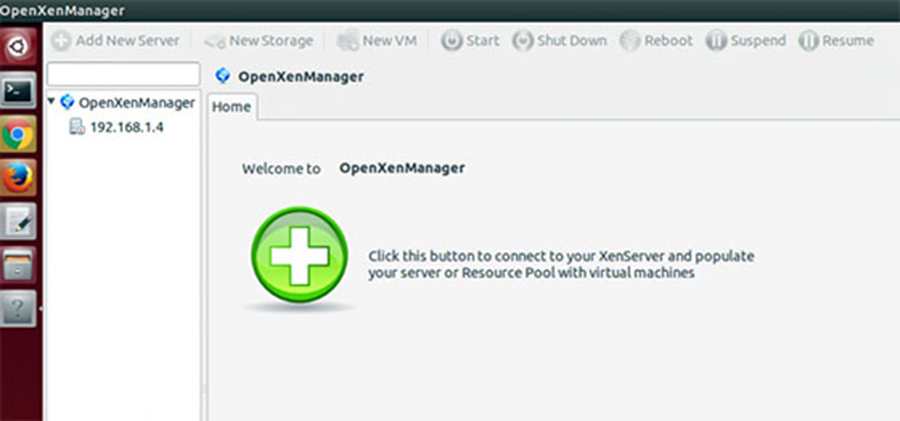Chamilo is an open-source (under GNU/GPL licensing) e-learning and content management system, aimed at improving access to education and knowledge globally. It is backed up by the Chamilo Association, which has goals including the promotion of the software, the maintenance of a clear communication channel and the building of a network of services providers and software contributors. The Chamilo project aims at ensuring the availability and quality of education at a reduced cost, through the distribution of its software free of charge, the improvement of its interface for 3rd world countries devices portability and the provision of a free access public e-learning campus.
Install Chamilo on Ubuntu 16.04 LTS
This article assumes you have at least basic knowledge of linux, know how to use the shell, and most importantly, you host your site on your own VPS. The installation is quite simple and assumes you are running in the root account, if not you may need to add ‘sudo’ to the commands to get root privileges. I will show you through the step by step installation Chamilo on a Ubuntu 16.04 (Xenial Xerus) server.
Step 1. First make sure that all your system packages are up-to-date by running these following apt-get commands in the terminal.
sudo apt-get update
sudo apt-get upgrade
Step 2. Install LAMP (Linux, Apache, MariaDB, PHP) server.
A Ubuntu 16.04 LAMP server is required. If you do not have LAMP installed, you can follow our guide here. Also install all required PHP modules:
apt-get install php7.0-curl php7.0-gd php7.0-mbstring php7.0-mysql libapache2-mod-php7.0 php7.0-mcrypt php7.0-bz2 php7.0-zip php7.0-json
You’ll need to also adjust some settings in your php.ini. Open up the file and edit these two variables:
nano /etc/php/7.0/apache2/php.ini
Also, add/modify the following settings:
date.timezone = 'America/New_York'
max_execution_time = 300
max_input_time = 600
memory_limit = 256M
post_max_size = 100M
upload_max_filesize = 100M
short_open_tag = Off
safe_mode = Off
magic_quotes_gpc = Off
magic_quotes_runtime = Off
session.cookie_httponly = On
extension = xapian.so
Step 3. Installing Chamilo.
First thing to do is to go to Chamilo’s download page and download the latest stable version of Chamilo, At the moment of writing this article it is version 1.10:
wget https://github.com/chamilo/chamilo-lms/archive/v1.10.0.zip
Unpack the Chamilo archive to the document root directory on your server:
unzip v1.10.0.zip
mv chamilo-lms-1.10.0/ /var/www/html/chamilo
We will need to change some folders permissions:
chown -R www-data: /var/www/html/chamilo
Step 4. Configuring MariaDB for Chamilo.
By default, MariaDB is not hardened. You can secure MariaDB using the mysql_secure_installation script. you should read and below each steps carefully which will set root password, remove anonymous users, disallow remote root login, and remove the test database and access to secure MariaDB:
mysql_secure_installation
Configure it like this:
- Set root password? [Y/n] y
- Remove anonymous users? [Y/n] y
- Disallow root login remotely? [Y/n] y
- Remove test database and access to it? [Y/n] y
- Reload privilege tables now? [Y/n] y
Next we will need to log in to the MariaDB console and create a database for the Chamilo. Run the following command:
mysql -u root -p
This will prompt you for a password, so enter your MariaDB root password and hit Enter. Once you are logged in to your database server you need to create a database for Chamilo installation:
CREATE DATABASE chamilodb;
CREATE USER 'chamilouser'@'localhost' IDENTIFIED BY 'Pa$$worD123';
GRANT ALL PRIVILEGES ON chamilodb.* TO 'chamilouser'@'localhost';
FLUSH PRIVILEGES;
quit
Step 5. Configuring Apache web server for Chamilo.
Create a new virtual host directive in Apache. For example, create a new Apache configuration file named ‘chamilo.conf’ on your virtual server:
touch /etc/apache2/sites-available/chamilo.conf
ln -s /etc/apache2/sites-available/chamilo.conf /etc/apache2/sites-enabled/chamilo.conf
nano /etc/apache2/sites-available/chamilo.conf
Add the following lines:
ServerAdmin [email protected]
DocumentRoot /var/www/html/chamilo
ServerName your-domain.com
ServerAlias www.your-domain.com
Options FollowSymLinks
AllowOverride All
ErrorLog /var/log/apache2/your-domain.com-error_log
CustomLog /var/log/apache2/your-domain.com-access_log common
Save and close the file. Restart the apache service for the changes to take effects:
systemctl restart apache2
Step 6. Accessing Chamilo.
Chamilo will be available on HTTP port 80 by default. Open your favorite browser and navigate to http://yourdomain.com/ or http://server-ip/ and complete the required the steps to finish the installation. If you are using a firewall, please open port 80 to enable access to the control panel.
Congratulation’s! You have successfully installed Chamilo. Thanks for using this tutorial for installing Chamilo e-learning and content management system on your Ubuntu 16.04 LTS (Xenial Xerus) system. For additional help or useful information, we recommend you to check the official Chamilo web site.
You Might Also Like: How To Install LAMP Stack on Ubuntu







